Why Ride Quality Gets Worse After “Upgrades”
You spent months picking out the right lift kit. Maybe you threw in some aftermarket control arms, a beefier track bar, even new shocks that promised “better ride quality.” But then you hit the road… and it feels worse than before.
The steering feels twitchy. Every little bump knocks the whole rig off balance. And forget highway driving — it’s like trying to wrestle a shopping cart with three locked wheels. Welcome to the land of poor handling lifted jeep problems. And no, it’s not your imagination — your ride quality really did get worse.
The issue? Bad suspension geometry.
When you lift a Jeep, Toyota, or any solid-axle rig, you’re not just raising it higher. You’re altering the entire dynamic of how the suspension moves, how the tires respond, and how weight transfers when you brake, steer, or hit a rut. The result is often a harsh, unpredictable ride that no bolt-on shock can magically fix.
That’s why this blog post exists.
We’re going beyond the “just get a better shock” advice. You’re about to get a full breakdown on what really affects ride quality — and how to fix it without tearing your entire build apart. From shackle reversal theory to steering brace for jeep wrangler logic, from solid axle swap kit math to the truth about spring over axle kit setups — this is your roadmap to a rig that actually handles right.
We’ll show you what works, what doesn’t, and how to make your suspension feel planted, controlled, and trail-ready — without compromising flex, comfort, or capability. So if you’re tired of white-knuckling down washboard roads or explaining to passengers that “it’s supposed to feel like that,” buckle up.
Table of Contents
- Why Some “Upgrades” Instantly Wreck Your Ride Quality
- The Real Suspension Geometry Traps Hiding in Every Lift
- What No One Tells You About 8.8 Swaps and Shackle Reversals
- Spring-Over or Coil Conversion? Why the Answer’s Not Universal
- The Overlooked Steering Upgrade That Solves More Than Wobble
- How to Finally Build a Rig That Rides Like It’s Meant To

Steering Problems After Lift Kit and Other Hidden Consequences
The moment you crank a Jeep or truck a few inches higher, you don’t just gain clearance — you invite chaos. Your rig might look ready for war, but beneath the surface, the ride starts to fall apart: twitchy steering, unpredictable lane drift, sudden bump-steer, and that dreaded “I can’t tell where I’m pointing” feeling. And the worst part? It doesn’t always show up right away.
Most off-roaders who’ve dealt with this already know the phrase that haunts every build thread: bad suspension geometry. What that really means is this — your steering and suspension components are no longer working at their designed angles. And the more aggressive your lift, the more extreme those angles get. Every degree out of spec translates into handling issues, uneven tire wear, and fatigue on bushings, joints, and frames. If your lifted truck rides bad, it’s not about shocks or tires — it’s about invisible angles you’ve already messed up.
Lifted Truck Rides Bad? Suspension Geometry Correction Kit Basics
You can’t fix a crooked triangle by changing one side. And lifting your rig without adjusting its suspension geometry is exactly that — a crooked triangle on wheels. Let’s break it down.
When you add 2–4 inches of lift to your solid axle suspension, here’s what happens under the frame:
Lifted truck rides bad because your control arms are now angled instead of horizontal. That changes the suspension arc and increases what’s called anti-dive under braking. In factory spec, lower control arms sit close to 0–5°. After a 4” lift, they can exceed 12°, shifting axle path rearward and downward during compression — which creates binding and a harsh ride.
Steering & suspension geometry gets skewed. A stock drag link and track bar are engineered to move in near-parallel arcs. But once lifted, their angles mismatch — the drag link often ends up steeper than the track bar, creating bump steer. The front axle starts moving left and right every time it cycles.
You also lose caster angle, especially on solid front axles. Stock caster (the angle that helps your wheels return to center) is usually 5–7°. A tall lift can drop this below 2°, making the steering feel twitchy, loose, or “floaty” at highway speeds. That’s textbook poor handling lifted Jeep problems.
Stock track bars no longer center your axles. Just 2–3” of lift can offset your axle up to half an inch side to side, which stresses joints, mounts, and makes your rig lean under load.
All of this is invisible — until you try to drive.
And that’s where a suspension geometry correction kit comes in. These kits drop your lower control arm mounts by several inches to flatten your arm angles and reclaim correct geometry. Some also relocate the mounts fore or aft to restore wheelbase and better align with driveshaft angles.
In short, a proper correction kit doesn’t just smooth the ride — it restores the designed kinematics your suspension depends on. Without it, you’re chasing shocks, steering stabilizers, and tires… none of which can solve the real issue.
That’s why, when off-roaders talk about fixing a rough ride after lift kit, the smart ones always start with geometry.

Understanding the Ford 8.8 Swap Kit
Buy 8.8 Swap Kit for Strength — but What About Geometry?
You don’t swap in a Ford 8.8 axle kit just for fun. You do it because your factory Dana 35 said “nah” one too many times, and the 8.8 swap kit Jeep TJ gives you beefier tubes, larger axle shafts, and disc brakes in one go. It’s the upgrade everyone whispers about once they’ve grenaded a rear diff halfway up a shelf road. But here’s the thing no one puts on the product page: the geometry doesn’t line up cleanly — and if you just weld it in and call it a day, you’ll ruin your pinion angle, eat through U-joints, and chase driveline vibrations forever.
The strength gain is real. A properly built 8.8 can take abuse that a stock TJ rear end simply can’t. But once you install that axle, everything above it — the rear suspension geometry correction kit, driveshaft slope, and even your spring perch position — demands a closer look. Geometry matters just as much as beef. Because if you bolt in strength but ignore alignment, you’ve just traded one problem for another.
Axle Offset Plate Adjustments
That’s where axle offset plate enters the chat — quiet heroes that solve a loud, annoying problem. When you swap in an 8.8, you’re not just dealing with beefier hardware. You’re dealing with different centerline widths and perch positions. The factory TJ spring perches don’t match the 8.8’s. And if you think you can just weld new perches and eyeball it, good luck lining up your rear track bar and driveshaft.
Offset plates let you reposition the axle laterally to compensate for the width difference and align your pinion angle precisely. They give you that last half-inch of correction that makes the rest of your setup work like factory — without rubbing, binding, or dog-walking down the highway. Without them, you risk shifted wheelbase and poor rear articulation, especially when flexing under load.
If you want a full checklist of what goes into a clean, geometry-correct 8.8 swap, this Wrangler TJ Forum tread covers every detail from offset plate fitment to perch placement — straight from experienced builders.
What Does a Shackle Reversal Do
Should I do a Shackle Reversal for Better Bump Response?
On a stock TJ or YJ, the front leaf spring shackle faces forward. It works… until it doesn’t. Slam your front end into a descent, and that shackle binds — the spring can’t compress cleanly, so the energy kicks back into your frame. That’s how you end up with bone-jarring hits and wandering steering.
Now flip that shackle around. With a rear-facing setup, the spring compresses into the frame naturally. The energy flows through the suspension arc, not into your face. The ride smooths out, the front end tracks truer, and your axle stops walking under load. That’s the magic of a shackle reversal Jeep TJ: it reorients your leaf spring’s motion to work with the trail, not against it.
And as our blog warned — skipping this upgrade on a leaf-sprung rig means chasing steering problems forever.
Choosing the Right Shackle Reversal Kit
Not all kits are created equal. Some are welded junk that throws your caster off. The good ones preserve ride height, fix steering arc, and keep approach angles usable. This JeepTech article breaks it down well: look for kits that allow alignment tweaks and don’t require frame modification. On older Jeeps, it’s the kind of mod that makes a 20-year-old leaf setup ride like a coil.
Spring Over Axle Kit vs Coil Conversion Kit
Difference Between Coil and Spring Over in Real-world Trail Use
When you’re building for example your TJ for the backcountry, you’ve got two suspension routes: a spring over axle kit Jeep TJ, or a full-blown coil conversion kit TJ. The first offers simplicity. The second offers fine-tuning. Both have their place — but they deliver entirely different experiences when rubber hits rock.
The spring over axle kit is a tried-and-true choice for those chasing trail strength, clearance, and reliability. It moves your axle underneath the springs, instantly gaining 4–6 inches of lift using your factory-style leaf pack. You’re not relying on custom springs or dialing in suspension rates. It’s clean. It’s reliable. And it works beautifully on overland rigs, classic Jeeps, and anyone who wants fewer failure points on a long trip.
That said, a coil conversion kit is worth it, if your build lives in the realm of ultra-articulated rock crawlers or weekend wheeling showpieces. Coils provide more tuning potential. They also demand more maintenance and more hardware.
Best Spring-over Setups
The best SOA builds use full spring-over kits with high-clearance perches, shock extensions, and steering corrections included. Don’t cheap out and weld on random perches. You’ll end up chasing bump steer and blown shocks. A full kit accounts for caster correction, axle wrap, and driveshaft angles. That’s the difference between a backyard lift and a trail-dominating leaf build.
Why Every Suspension Upgrade Needs Steering Support
Steering Brace Jeep as Protection Against Jeep Death Wobble Fix
Here’s the truth: if your steering box flexes even a little, your entire front suspension turns into a guessing game. Doesn’t matter if you’ve got the best long-arms, fresh bushings, and dialed-in alignment. When you crank the wheel under pressure, and your box walks even an eighth of an inch, that energy travels through the tie rod like a whip — and what you feel is the infamous Jeep death wobble fix.
As we pointed out in our 5 Costly Oversights Every Offroader Can Easily Prevent, skipping a proper steering brace after suspension upgrades is one of the easiest ways to invite steering instability — and one of the simplest fixes to get right, It’s structural insurance. It ties the box to the crossmember and removes deflection. Your steering becomes predictable, tight, and able to take abuse mile after mile.
Especially with leaf spring setups or 8.8 swaps where frame flex compounds the issue, a steering box brace makes the difference between a white-knuckle trail ride and a confident, precise descent.

Final Thoughts: Your Suspension Geometry Cheat Sheet
If your lifted truck rides bad, start with geometry — not shocks. A suspension geometry correction kit is your first fix, not your last resort. It flattens your control arms, restores caster, and eliminates bump steer at the root.
If you swapped in an 8.8 swap kit Jeep TJ, don’t just weld and go. Use axle offset plates to align your pinion angle, recentralize your axle, and avoid stress on your driveshaft and rear suspension.
If your front end bucks over bumps, a shackle reversal Jeep TJ can calm the ride — especially for leaf spring setups that bind under compression. Reversing the shackle position smooths energy flow and keeps the front axle tracking true.
If you’re torn between coils and leafs, know this: a spring over axle kit Jeep TJ gives you lift, strength, and simplicity. But if you need extreme articulation and trail-tuned responsiveness, a coil conversion kit TJ may still be worth the complexity.
And finally, if your steering feels vague or twitchy after a lift, a steering brace Jeep TJ is a must. It locks your box in place, fights frame flex, and helps prevent the notorious Jeep death wobble fix.
Geometry is what makes your rig handle like it should — whether you’re bombing washboard roads, crawling slickrock, or cruising the highway with confidence.
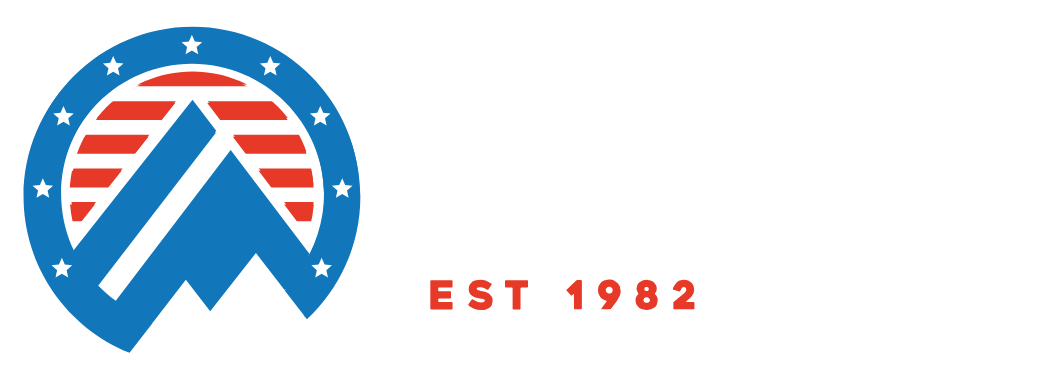
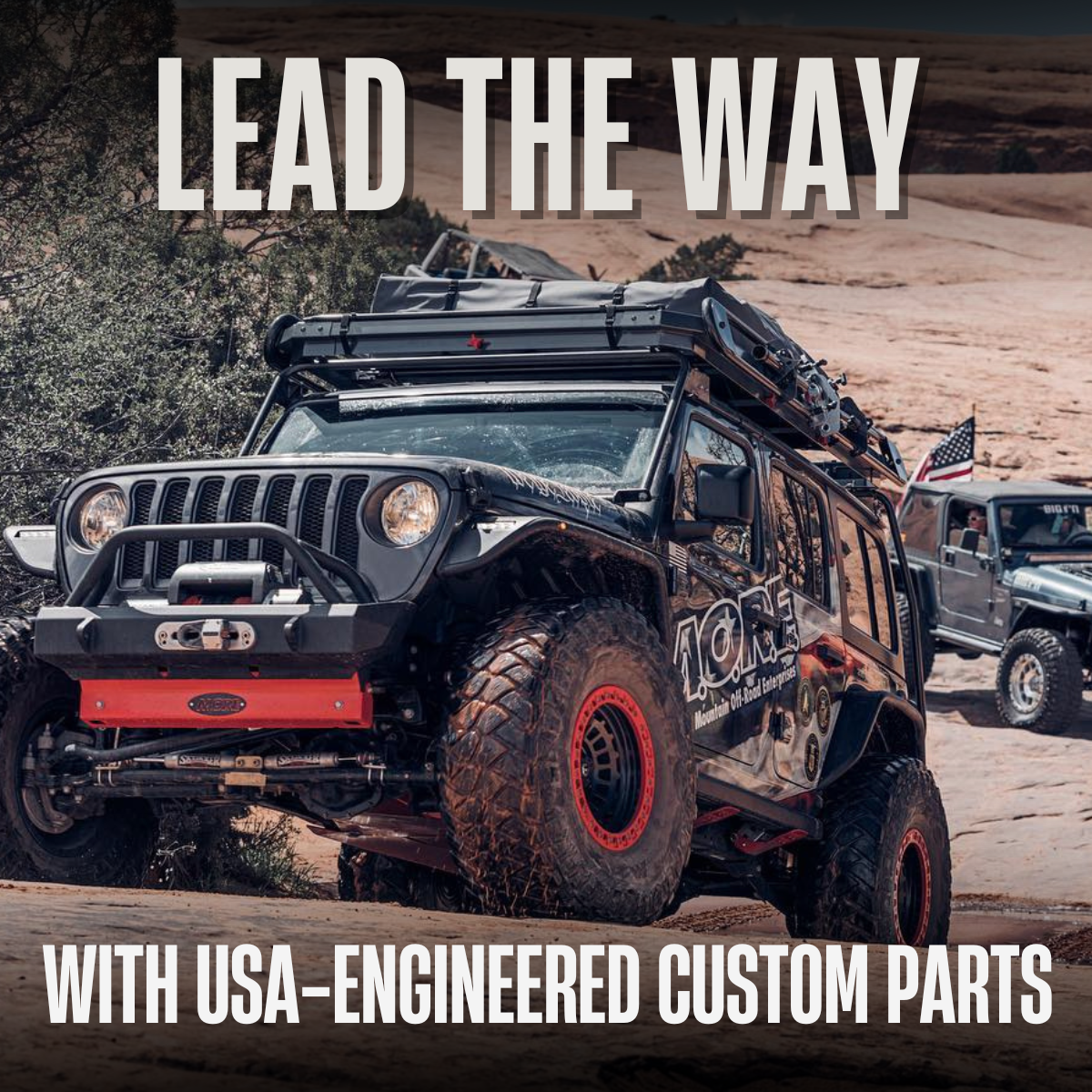
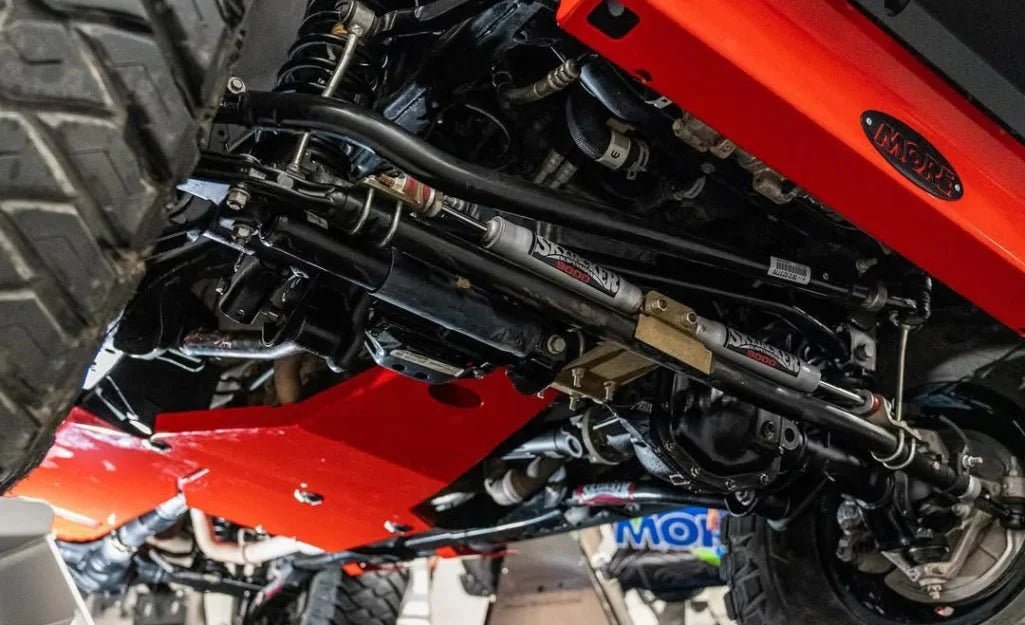
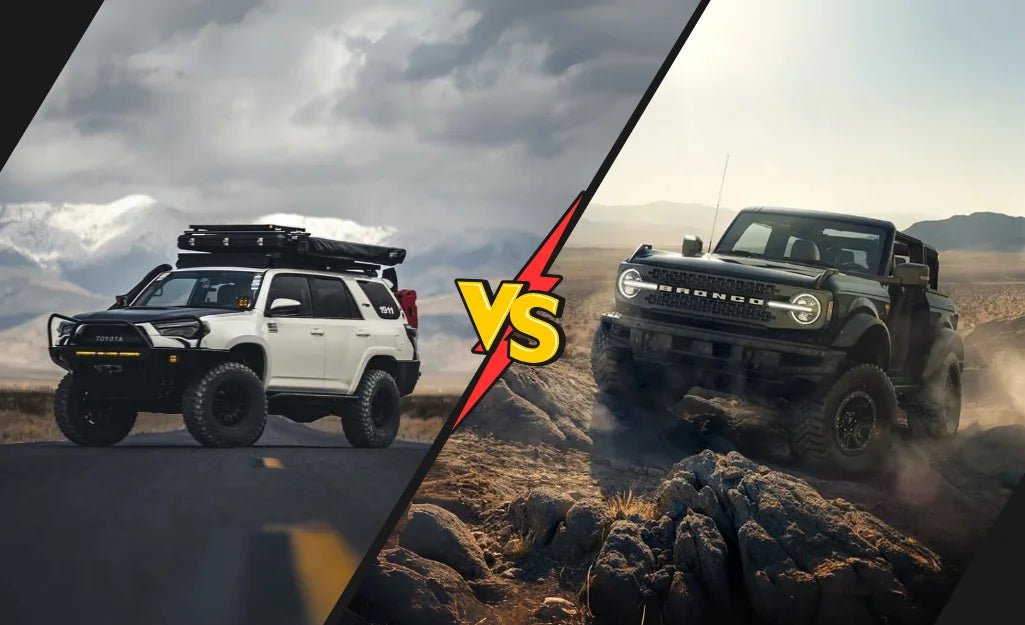
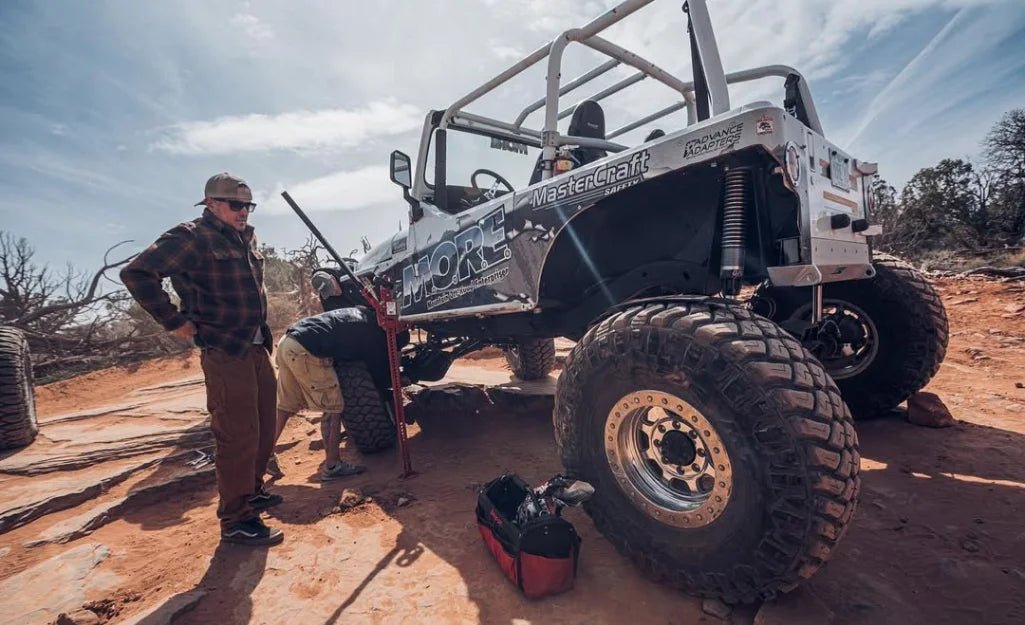
Leave a comment
This site is protected by hCaptcha and the hCaptcha Privacy Policy and Terms of Service apply.